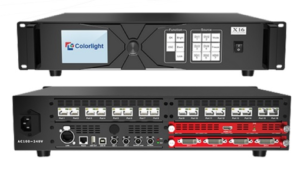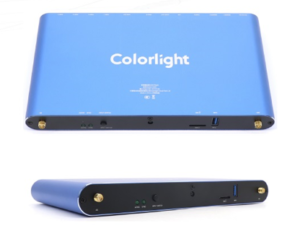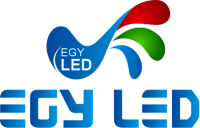Driving principle of LED screen

Driving principle of LED screen
Driving principle of LED screen: As an emerging media and information release platform, LED display is increasingly widely used, including commercial advertising, government announcements, sports events, conferences and exhibitions and other fields, To realize the normal display of LED display, it is necessary to adopt an efficient and reliable driving and control method.
This article will introduce the drive and control methods of LED display, to help readers better understand and use this advanced display technology.
Driving principle of LED screen
The driving principle of LED screen is based on dot-matrix display technology, by controlling the brightness and color of the LED, various contents such as text, pictures and videos can be displayed. Under normal circumstances, LED display can be divided into static drive and dynamic drive two ways.
Static drive:
Static drive is achieved by controlling the brightness and color of LED, Its main characteristics are simple, reliable and stable, but the gray level is not high, cannot achieve high quality display effect, Generally suitable for simple text, numbers, graphics and other static content display.
Dynamic drive:
Dynamic drive is achieved by controlling the refresh rate and brightness changes of LED, Its main feature is high gray level, can achieve a more delicate, smooth display effect, suitable for high quality text, image, video and other dynamic content display, But its complexity and stability are higher than static drive.
Control method of LED display
Driving principle of LED screen mainly include the following:
Serial communication control:
Serial communication control is a serial communication protocol based on the LED display control mode, its main characteristics are fast data transmission speed, high reliability, high gray level, support multilevel connection and so on, Common serial communication protocols include SPI, I2C, and DMX512 and so on.
Through serial communication control mode, can achieve a variety of display effects, including static display, dynamic display, color gradient, flicker and other modes.
Parallel communication control:
Parallel communication control is a kind of LED display control mode based on parallel communication protocol, Its main characteristics are fast data transmission speed, high reliability, and support for large capacity data transmission and so on.
Common parallel communication protocols include RGB, TTL, LVDS, etc. Through parallel communication control mode, high quality display effect can be achieved.
How do I program my LED display?

Video Processor – Colorlight / Driving principle of LED screen
The way you program an LED display depends on the specific hardware and programming language. Here are the general steps for your reference:
Understand the hardware: View the technical specifications and documentation of the LED display to understand how it is connected, communication protocols and supported operations.
Choose a programming language: Choose a programming language that works for you, common choices include C/C++, Python, etc. Make sure the language you choose is compatible with your hardware and communication protocols.
Set up the development environment: Install the development environment for the language of choice and configure the correct compiler or interpreter.
Write code: Write code to control the LED display using the programming language of your choice, The exact code will vary depending on your hardware and communication protocol.
- Connection: Ensure that the LED display is properly connected to the computer or controller. This may involve using USB, serial ports, networks, etc.
- Initialization: Initialize the communication interface and set necessary parameters based on the requirements of the display.
- Send commands: Use the appropriate command or command sequence to control the display. This may include setting brightness, colors, displaying text or images, and so on.
- Cyclic update: If you want the display to update content in real time, you may need to constantly send update instructions in a loop.
Compile and run: Compile the code into an executable (if using C/C++) or run the script directly (if using Python), Make sure the hardware is properly connected and the display can receive commands, Please note that the above steps provide general guidance only, and the implementation will vary depending on the hardware and programming language you are using.
Before you start programming, make sure to read and follow the documentation and instructions for your LED display.
To contact EGYLED maintenance team, Click here.
When purchasing an LED display control system, the following factors need to be considered:

Video Box (Asynchronous) – Driving principle of LED screen
Display type: Different types of LED displays require different types of control systems. For example, monochrome and full-color displays require different control systems.
Display effect: Different display effects require different control systems. For example, a display that requires a dynamic video display needs to support a high refresh rate, while a display that requires a static image can use a control system with a low refresh rate.
Display resolution: The control system must support the resolution of the display, If the resolution of the control system is not enough to support the resolution of the display, the display effect will be affected.
Control mode: According to the different control mode, the control system can be divided into synchronous and asynchronous two, The synchronous control system can realize high-definition video playback and real-time data update, while the asynchronous control system is suitable for the display of static images and text.
Use environment: The control system needs to adapt to the characteristics of the use environment.
For example, outdoor displays need to have characteristics such as water, dust and high temperature resistance, Considering the above factors, the choice of their own control system needs to be determined according to the specific application scenarios and needs.
You can consult with professional LED display manufacturers and choose the appropriate control system according to the technical solutions and product specifications provided by them.
For more information’s about EGYLED products, Click here.
EGYLED is the largest manufacturer of LED screens in Egypt, the Middle East and Africa
About us:
EGY LED is an Egyptian innovative manufacturing and trading company providing outstanding indoor and outdoor LED display screen solutions to the Egyptian, Middle East and Africa markets. With more than 1400 projects in the last decade, our experience and intensive development have resulted in a strong, modern enterprise, reliable and sought after partner on an international level.
EGY LED HQ is based in Cairo with its state of art manufacturing facilities located in Badr industrial city and support offices in Heliopolis, 6th. Of October City and Delta accomplished projects domestically and internationally.
Our vision:
To be the first manufacturer of giant LED screens in the Middle East, the Arab world and Africa, This is after we gained the trust of our customers and became the first brand in Egypt
Our message:
Manufacturing technology of the future, and impressing customers with our modern technologies, high quality products and distinguished services, We have explained everything about all you need to know about LED screen in a short and clear way.

